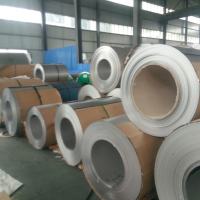In the alloy composition, effective alloying elements: aluminum, copper, magnesium; harmful impurity elements: lead, cadmium, tin, iron.
(1) Aluminum
Role:
Aluminum bar
Aluminum rods
① Improve the casting performance of the alloy, increase the fluidity of the alloy, refine the grains, cause solid solution strengthening and improve the mechanical properties.
② Reduce the reaction ability of zinc to iron, and reduce the erosion of ferrous materials, such as gooseneck, mold and crucible.
The aluminum content is controlled at 3.8 ~ 4.3%. The main consideration is the required strength and fluidity. Good fluidity is necessary to obtain a complete, dimensionally accurate and smooth surface casting.
(2) Copper
Effects:
1. increase the hardness and strength of the alloy;
2. improve the wear resistance of the alloy;
3. reduce intergranular corrosion.
Hardware copper bushing
Hardware Copper Bushing
Disadvantages:
1. changes in die casting dimensions and mechanical strength due to aging when the copper content exceeds 1.25%;
2. reduce the extensibility of the alloy.
Effects:
① Reduce intergranular corrosion
② Refine the organization of the alloy, thus increasing the strength of the alloy
③ Improving the wear resistance of the alloy
Disadvantages:
① When the content of magnesium > 0.08%, it produces thermal embrittlement, decreasing toughness and liquidity.
② easy to oxidation loss in the molten state of the alloy.
(3) impurity elements: lead, cadmium, tin
Make the intergranular corrosion of zinc alloy becomes very sensitive, in the temperature and humidity environment accelerated its own intergranular corrosion, reduce the mechanical properties, and cause changes in the size of the casting.
When the zinc alloy impurity elements lead, cadmium content is too high, the workpiece just die-casting molding, the surface quality of all normal, but after a period of storage at room temperature (eight weeks to a few months), the surface appears bulging.
(4) impurity elements: iron
① Iron and aluminum react to form Al5Fe2 intermetallic compounds, resulting in the loss of aluminum elements and the formation of floating slag.
② Form hard spots in the die casting, affecting post-processing and polishing.
③ Increase the brittleness of the alloy.
The solubility of elemental iron in the zinc solution increases with temperature, and each change in the temperature of the zinc solution in the furnace will result in either supersaturation of elemental iron (when the temperature drops), or unsaturation (when the temperature rises). When iron is supersaturated, the iron in the supersaturation will react with the aluminum in the alloy, resulting in an increase in the amount of floating slag. When the elemental iron is not saturated, the corrosion of the alloy on the zinc pan and gooseneck material will be enhanced to return to saturation. A common result of both temperature changes is the eventual depletion of the aluminum element, resulting in the formation of more scum.





